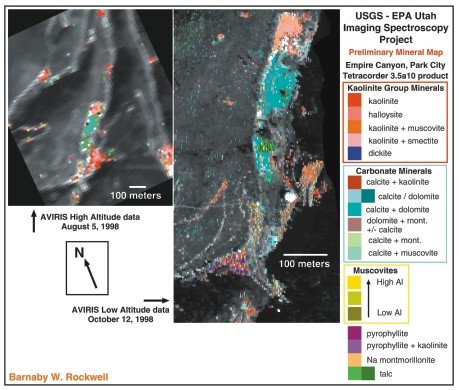
What: Identification of mineral separations by color
Where: Waste rock piles in Empire Canyon, Park City mining district, Utah.
Resolution: Left: 17-20 meters. Right: 2-4 meters
From: Left: AVIRIS flown at 60,000 feet on ER-2 aircraft. Right: AVIRIS flown at 15,000 feet on Twin Otter aircraft. Image analysis performed by Barnaby Rockwell of the U.S. Geological Survey Spectroscopy Laboratory in Denver (http://speclab.cr.usgs.gov).
The paper containing these images is available at: http://speclab.cr.usgs.gov/earth.studies/Utah-1/park_cityAV5.html.
